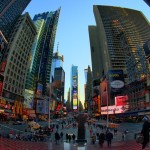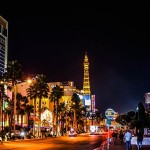10 alternative European City Breaks
If you’re after a fresh spin on the city break look beyond the usual big names for more cool culture and great sights.
Valletta, Malta
Magical Malta … the St Paul’s Pro-Cathedral and Valletta waterfront.
The island of Malta itself is a sight to behold but within the walled city of its capital, Valletta, built by the Knights of St John in the 16th century, there is plenty more. Malta’s oldest fort, Fort St Angelo, and the Hal Saflieni Hypogeum – an incredible burial complex cut into rock – are some of the unmissable sights, but the city isn’t without contemporary touches, such as Renzo Piano’s city gate, completed two years ago; and in 2018 Valletta will celebrate the title of City of Culture. Along the narrow, bustling, Strait Street you’ll find bars and live music, elsewhere restaurants, including the unpretentious Da’ Pippo Trattoria (+356 2124 8029), serve delicious Italian cooking, while chic bistro Guze – in a 16th-century building – specialises in local cooking, with rabbit and pork dishes, alongside staples such as pasta and risotto.
Wrocław, Poland
Old Market Square in the Old Town in Wroclaw
It may seem tricky to pronounce but don’t let that stop you discovering this passionate Polish city with a radical history: this spans from venues such as the Song of the Goat Theatre to post-punk commune Centrum Reanimacji Kultury. For 2016, Wrocław is Europe’s capital of culture, with a programme ranging from specially curated Film Operas to a major summer concert with Pink Floyd’s David Gilmour. While the contemporary side of the city – such as art and party space Neon Side Gallery – are a worthy distraction, don’t let that stop you exploring the city’s past; the old town, full of bridges and parks, is a beautiful place to explore, as is the village-like Cathedral Island, dotted with gothic architecture.
Marseille, France
A bistro in the Quartier du Panier, Marseille
In the oldest area, Quartier du Panier, you’ll find independent cafes and shops – such as classic soap shop La Grande Savonnerie – and contemporary galleries along rue Sainte and rue Grignan. As well as beautiful historical sights, such as the huge neo-Byzantine church Nôtre-Dame de la Garde, you’ll find a younger, edgier Marseille by exploring places like art and social space Friche La Belle de Mai, which has a rooftop bar and open-air cinema throughout the summer.
Dubrovnik, Croatia
Diners on an Old Town street in Dubrovnik
A picturesque city – and the main shooting location for King’s Landing in HBO’s Game Of Thrones – Dubrovnik’s terracotta rooftops tumble down to the blue Adriatic. Among them there’s lots to enjoy, from drinking fresh pilsner in the bars of the old town to a visit to an ancient (still working) apothecary at the Dubrovnik monastery. For history, it’s also worth visiting the Homeland War Museum, which you can combine with a cable car ride to the top of Mount Srdj Also, the Museum of Modern Art is excellent. Culinary indulgences can be found at acclaimed restaurants such as 360°, while beach-side bar and club Banje is among the swankiest of the city’s cocktail hangouts.
Sarajevo, Bosnia and Herzegovina
Aerial daytime city view of Sarajevo skyline.
This year marks the 20th anniversary of the signing of the Dayton peace agreement, which ended four years of war and the devastating siege of Sarajevo. Though its history – including as the flashpoint for the first world war – remains an important part of its present, the Bosnian city, which often draws comparisons with Istanbul, is a beautiful and diverse place to visit, with cobbled streets to explore and excellent cafes serving traditional, slow-brewed coffee and delicious burek (stuffed pastries). To get a grasp on the city under siege, visitors should investigate the Tunnel of Hope – a museum on the site of the city’s wartime supply line – and also visit memorial museum Galerija 11/07/95, which attempts to explain the Srebrenica tragedy. For the city’s creative side, start at the ambitious Ars Aevi Museum of Contemporary Art, before checking out some of its smaller galleries, such as Duplex100m2, which focuses on the country’s emerging artists. The Pivnica HS brewery, which also has a restaurant, is a good place to sample local award-winning beer.
Girona, Spain
The steps of Sant Martí Sacosta, Girona, Spain
An hour’s drive from the beautiful coastline of Costa Brava, should you wish to combine a trip with some beach time, Girona offers visitors a serving of Catalan culture without the swarms of tourists that descend on Barcelona during peak season. Pro-cyclists have long used the city as a training base, Dan Craven recently recommended cycle cafe La Fabrica as a place to get tips on where to ride. Things to take in, when you’re not checking out the modernist architecture, include the ancient cathedral and the museum dedicated to the city’s Jewish history. Michelin-star restaurant El Celler de Can Roca is an obvious indulgence, while the long-running Sunset Jazz Club is among the places to get dancing.
Bologna, Italy
Shop selling fruit, vegetables in the old market area, Bologna, Emilia-Romagna, Italy
If ever there was a place to binge on Italian food, then it’s here, in a beautiful university town brimming with classic trattorias – from smarter Ristorante Biagi to cheap local haunts such as Trattoria Anna Maria; both places have staff who have been there for decades. Although dining, along with its aperitivo culture and abundance of religious architecture, is the main draw for most visitors, Bologna also has a younger, radical side: the Libreria modo infoshop is a good starting point to find out more about the scene as is social centre XM24, which has regular events, such as a weekly organic market every Thursday. If you visit in November, make sure your trip coincides with one of Bologna’s leading cultural events, the Bilbolbul international comic festival, which takes place in venues from museums to homes.
Brno, Czech Republic
Cathedral of St Peter and Paul, Brno
Tourism to the Czech Republic often feels concentrated on Prague, so a visit to Brno, the country’s second city, allows you to take full advantage of this – expect a city break free of stag dos! The most important attraction is the baroque Cathedral of St Peter and Paul, while other sights include the spectacular Moravian Karst and caves – a network of more than a thousand underground caves and gorges. Among the city’s many museums and galleries is the Moravian Gallery, where there are collections of visual art and graphic design. Still, as in Prague, the affordable food and drink is a major draw; so knock ‘em back at one of the city’s pubs, such as Výčep Na stojáka, and feast on delicious local cooking at restaurants such as Soul Bistro or Simplé. New bars such as cocktail joint Super Panda Circus and gastropub Lucky Bastard Beerhouse are part of a growing collection of modern urban hangouts.
Tallinn, Estonia
Tallinn, Estonia, city skyline view on a sunny day.
A medieval city on the Baltic, Tallinn is a quaint destination (bar the stag dos). Pulling together Baltic, Russian and Scandi culture, the old town is a Unesco heritage site where you’ll find the magnificent, onion-domed St Alexander Nevsky Cathedral. The city is also home to a large art museum, the Kunstimuuseum, so there’s plenty more to Tallinn than cheap beer – and whole areas to explore beyond the more obvious, boozy, tourist trail. The city’s most interesting district is Kalamaja, a creative neighbourhood where abandoned spaces are being repurposed. A highlight is Telliskivi Creative City, a factory complex now occupied by exhibitions, shops, cafes and performance spaces, such as restaurant and venue F-Hoone. For more of Tallinn’s boho side, dine at nAnO a restaurant and garden cafe in the converted old town home of model agency owner Beatrice Fenice.
Graz, Austria
Outside view of the Graz Modern Art Museum nicknamed by locals as ‘Friendly Alien’.
With a strong cultural heritage, Austria’s second city is a beautiful red-roofed university town in the southern state of Styria. It is home to impressive museums, from the unique Museum of Perception – where you’ll find eye-boggling art pieces – to the striking Kunsthaus Graz, a museum with a space age facade that resembles a giant illuminated alien blob. Another piece of impressive design to check out is the Island in the Mur created by the artist artist Vito Acconci, which has a cafe and performance space. The student population means there is a good nightlife scene from cafe/bar Blendend to bar and venue die Scherbe.














